Automotive metal parts: anti-corrosion principle and measures
2020.03.27 Corrosion of automotive metal parts is unavoidable and must be effectively protected. This article obtains from the principle of the metal parts corrosion, in view of four common types of corrosion: spot corrosion and local corrosion, crack corrosion and corrosion under the load, in-depth analysis of the causes of corrosion, and then put forward the strategy of the automotive metal parts corrosion, finally studied all kinds of anti-corrosion measures, including optimizing anticorrosive design and improve the corrosion environment, materials substitution, improve coating and enhance the electrochemical protection, etc.Through these analysis and research, it is expected to improve the anti-corrosion measures of existing auto metal parts and improve the anti-corrosion performance.
Automotive metal parts, big percentage in all kinds of auto parts, their long exposure in the atmospheric environment, and long time contact with the oxygen from the atmosphere, water and pollutants, are prone to corrosion, namely the chloride ion penetration on the surface of the metal oxide layer and protective layer and internal metal electrochemical reaction process. Corrosion not only directly affects the service life of automotive metal parts and the use of safe, can also lead to environmental pollution and traffic accidents, losses to social and economic development. Corrosion and damage is a slow process, but often taking years or even longer. So, in automotive metal parts design, development and manufacturing of metal car components, anticorrosive processing is very necessary.
1. Principle of corrosion
The common corrosion types of automotive metal parts include spot corrosion, local corrosion, crack corrosion and corrosion under the load.

Local corrosion includes pitting corrosion, bimetallic corrosion and intercrystalline corrosion. Pitting corrosion often occurs on the surface of stainless steel, aluminum and aluminum alloy, zinc alloy components, tin plating, copper plating, chrome nickel plating. Bimetal corrosion is a kind of metal with low potential in different metal connections. For example, zinc, aluminum and their coatings connected with steel are prone to corrosion due to potential difference. Intercrystalline corrosion is the corrosion of stainless steel, aluminum alloy and other auto parts. Intercrystalline corrosion is caused by the changes in the chemical composition of grains and boundaries caused by heating and welding during manufacturing.
Crack corrosion is caused by different conditions such as oxygen content and ion concentration inside and outside the gap, as shown in figure 2. Such corrosion is very easy to occur in the positions of riveting, welding and bolt connection. However, the environment containing Cr will speed up the crack corrosion. The width sensitive to crack corrosion is 0.025-0.1mm.
Some load-bearing components in automobile are prone to stress corrosion fracture under damp corrosion environment. Fatigue corrosion is easy to occur under periodic dynamic load. Microdynamic corrosion occurs in the case of micro-periodic vibration. The risk of corrosion of automotive components under load is that the components break under loads far lower than the yield limit of materials. This kind of corrosion is hidden and sudden. Corrosion of the lower beam of the door

figure 2
2. Causes of corrosion
There are many causes of vehicle corrosion, which can be divided into two categories: corrosion caused by using environment and corrosion caused by its own structure. The operating environment of automobile is complex and changeful, mainly including humidity, ph, temperature and so on. Corrosion will accelerate in areas with high relative humidity, such as coastal areas. Acid and alkali in the air and rain and snow can also accelerate the corrosion of the car body; When the temperature is raised, the part in the bad ventilation will accelerate the corrosion. The corrosion environment inside the automobile, such as the high temperature of the engine and combustion gas containing sulfur and chloride ions, and the acid fog and liquid leakage of the battery will accelerate the corrosion. Local damage caused by vibration, shock, friction, collision, etc.
The unreasonable design of automobile structure will also lead to corrosion. Sediment, dirt, and moisture trapped under the body accelerate corrosion. Dirt or debris that contains moisture remains on the body or other parts.
3. Corrosion protection principle
The factors affecting corrosion are very complex and diverse. It is very difficult to eliminate corrosion fundamentally, but we can optimize the design, materials, coating, process and other aspects to reduce the damage of corrosion. In particular, auto parts not only directly affect the performance of the vehicle, but also indirectly affect the safety of the occupant. Corrosion protection is very important and should not be taken lightly.
Optimize the design: optimize the anti-corrosion design, optimize and improve the corrosion environment. In the design of auto metal parts, attention should be paid to optimize from the aspects of part structure selection, material matching, structural layout rationality, structural connection rationality and preventing gap generation.
Optimization from materials: the thermodynamic stability of materials can be improved, and the composition of parts material alloy can be improved. Increasing anode control measures; It can also be replaced on materials, and the existing ordinary materials can be replaced into materials with strong anti-corrosion performance, or into aluminum and magnesium alloy, engineering plastics and other non-corrosion-resistant materials.
Optimization from coating: improve the coating of metal parts and enhance the electrochemical protection; replace the common paint coating with a coating with strong anti-corrosion performance, such as cathodic protection, anodic protection, dacromet coating, etc.; add protective coating at the crack, interlayer and cavity bottom of parts, etc.
Process optimization: develop reasonable parts manufacturing process to prevent collision and scratch in the manufacturing process, and try to use the manufacturing process and measures that do not damage the protective layer.
4. Protective measures for automotive metal parts
The protection of corrosion of automotive metal parts can be improved from the aspects of design, material, coating and technology.
4.1 Corrosion protection measures on automotive parts design
Anti-corrosion design is the most important barrier for anti-corrosion of automotive parts. Whether anti-corrosion is considered in the design is also an important prerequisite for determining the corrosion life of parts.

FIG. 4
In the design of parts, the enclosed area of the shaped surface should be avoided as much as possible, or the ventilation and drainage of the closed system should be good. Ventilation holes or drainage holes can be designed, as shown in FIG. 4. Drainage holes are designed at the bottom of the door to prevent the water inside the door from being discharged.
The appearance design should be as round as possible, without the sudden change of dead Angle or shape, so as not to cause water accumulation, rounded Angle and smooth appearance can reduce the retention place, when the design strengthens plate and reinforcement, it should make its air circulation circulation, good drainage and avoid the retention area.
The electrical parts and joints shall be arranged on the inner side or a protective cover shall be added. The parts of the vehicle exposed to corrosion and water are provided with dust cover. In the design of parts, uniform corrosion is considered and one or several combination anti-corrosion methods, such as coating, electroplating, conversion film and anti-rust grease are selected. The structure of the parts shall be convenient for the implementation of the protective process and the process holes shall be opened when necessary.

figure 5
Connection with the spare parts, car body welding is better than riveting or screw connection strength, but also damage the surface of the metal welding protective layer, cause there are sharp edges at corrosion and due to weld it free of paint and rust, so when the design should consider appropriate welding place to hide, as shown in figure 5, the solder joints under A column design, pack sealing strip will be coated on the solder joint, have the effect of corrosion protection of solder joint, or in the subsequent process of welding parts for anti-corrosion treatment, in order to increase weld and solder joints corrosion resistant strength, such as coating sealant, etc.
At the junction of different metals, try to choose metal connections with similar potential, or adopt insulating measures, such as insulating glue between aluminum alloy and steel after cadmium plating, to prevent the occurrence of galvanic corrosion.
4.2 Corrosion protection measures on auto parts selection
Many important structural parts of a car are made of steel. For severely corroded parts, corrosion resistant metals (such as weather resistant steel) with low corrosion rate should be selected in materials, or the metal thickness should be increased appropriately. Stainless steel containing Mn, Mg and other alloy elements should be selected more. At the beginning of automobile design, the amount of common carbon steel should be reduced and the amount of high strength steel should be increased. Use galvanized steel sheet more, conduce to raise car to prevent corrode performance, if the place of body bottom border is easy to be touched water and oil fluid is about to use galvanized steel sheet more. As shown in figure 6, it is the application of galvanized steel plate on column A.
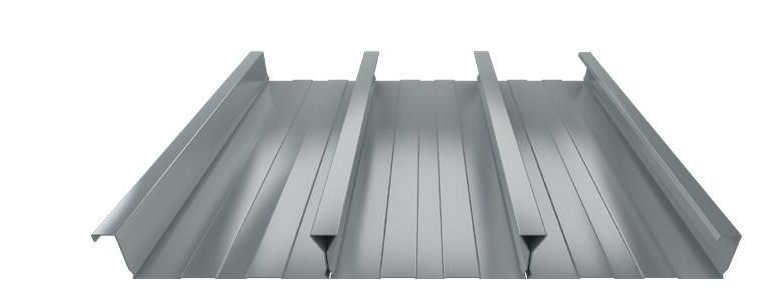
figure 6
At present, the application of plastics and aluminum alloy in automobile is more and more, there is a trend of replacing metal. Some engineering plastics can be compared with metal materials in terms of their properties. They have good abrasion resistance, impact resistance and corrosion resistance, and are popular alternative for metal materials. Aluminum alloy is also one of the alternatives to iron and steel materials due to its light weight, good corrosion resistance and high strength. It has been applied to the engine frame, wheels, brake clamp and other corrosion-prone parts, as shown in FIG. 7. Therefore, when choosing parts and materials, plastic and aluminum alloy can be used to replace metal materials to prevent corrosion.

FIG. 7
4.3 Corrosion protection measures for automotive metal parts coating and process
At present, the most widely applied coating measure on metal surface is paint coating, as
shown in figure 8, which is the spraying process of automobile paint. Generally, paint coating can be divided into three layers: primer, intermediate coat and topcoat.

figure 8
The primary function of the primer is to provide good adhesion and corrosion resistance between the metal and the coating. There are three types of primer by process, namely spray primer, dip primer and electrophoretic primer. The medium coating is used to fill the defects and imprints on the body of the car. It can play a role in preventing stone blows, increasing faceness, waterproof and increasing surface smoothness. At present polyester is considered as the best medium paint on cathode electrophoresis primer. The main function of topcoat is to provide exterior decoration, to maintain surface gloss and color for a long time, to be able to resist light oxidation and hydrolysis resistance, also required to be able to withstand acid rain, to withstand heavy rain after a long time of sun exposure, to withstand stone strikes, and to prevent oil leakage.
Other coating methods include phosphating, anodic electrophoresis, sealing, inner cavity coating, dacron, etc.
Steel phosphating in the pretreatment process can form a layer of corrosion resistant film on the metal surface. Chemical treatment will increase corrosion resistance and increase corrosion resistance.
Anode electrophoresis as automotive primer has become a common metal protection, anode electrophoresis good penetration, paint film, salt fog resistance and moisture and corrosion resistant performance is good, most of the car body in the world using anodic electrophoretic paint, electrophoretic process parameters to control a great influence on the film performance, therefore, reasonable choose electrophoresis parameters is very important. The anode electrophoresis process is shown in figure 10.
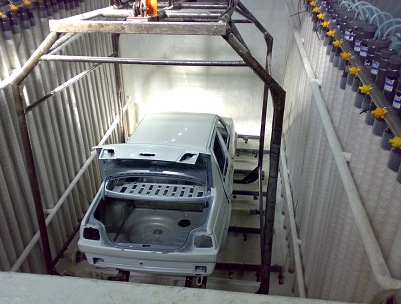
figure 10
PVC weld seal can effectively prevent the corrosion of welding seams and welding spots, and also play a role in sealing. For car body, almost all welds should be sealed with PVC materials to improve the corrosion resistance.
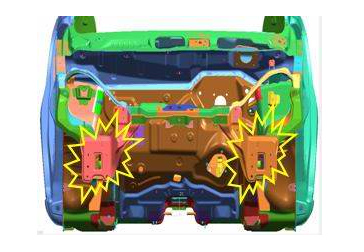
figure 11
As the cracks, interlayers and the bottom of cavities of the parts are in a humid state for a long time, the corrosion speed is accelerated rapidly, resulting in obvious corrosion, and even leading to perforation of metal materials. The inner cavities are often coated with wax for protection, as shown in figure 11. The wax injection site is very numerous, usually with dozens or so, roughly including front longitudinal beam, front beam, A column, B column, C column, top beam, bottom beam, back longitudinal beam and back beam (upper and lower beam refers to the steel beam inside the intersection of car roof, floor and side); The top plate of the hood (the front piece of the windshield behind the windshield); The inner and outer casing of the engine; All the door inner plate and outer plate (mainly the lower part of the door plate); All wheel covers; Luggage cabin cover and outer cover; All the other places where there are cavities.
For some fasteners which require high corrosion resistance, we can apply surface coating with dacron process. The so-called dacromet is a sheet zinc chromate protective coating, also known as zinc-chromium film, which is a new technology of international surface treatment. Dacromet coating is mainly composed of flaky zinc, aluminium, and amorphous polymer composite chromate, pieces of metal on the surface of the matrix layer upon layer overlay, chromate polymer filling between the metal, and through the resin curing reaction, make between sheet metal and sheet metal bonding between the matrix and firmly together, form a special kind of flake staggered laminated structure. The metal products treated by dacromet have excellent performance and strong corrosion resistance. Generally, the coating thickness of 6-8um can guarantee that no red rust will occur at 480-1000h in the salt spray test, which is 5-7 times higher than that of electric galvanizing. High heat resistance (heat resistant up to 300 ° C), surface coating even long time under high temperature conditions will not corrode.
5. Conclusion
To sum up, corrosion of automotive metal parts cannot be avoided, but we can protect corrosion from design, materials, coating and other aspects to reduce the harm caused by corrosion. Corrosion protection from design is the root cause, which can reduce the investment in the early stage and avoid unnecessary waste. Corrosion protection is guaranteed from the selection of materials, which can effectively avoid the waste of materials and improve the anti-corrosion strength of materials. Protection from coating is guaranteed, but the choice of various coatings should be reasonable, according to different corrosion levels and parts of the application of different protective coatings.
If you are interested to buy Automotive Metal Parts, please feel free to contact Relong Auto Parts Manufacturer from China.
Related News

Do you really know about the current situation and development trend of automotive rubber parts?
September 3, 2018The rapid development of China's automotive industry is promoting the related supporting industries, especially the rubber industry. Over the years, automotive rubber parts have developed into a uniqu... view
Anti-Vibration &Safety Product of Rubber Auto Parts
September 3, 2018Anti-vibration productIt is mainly installed in the engine, car body, air conditioning and car suspension system. It is mainly used to reduce vibration and noise when driving, improve the stability, s...view
Pressure Die Casting Parts Development Prospects
September 3, 2018China's economy is still developing rapidly. As the contradiction between the resources and the environment is increasingly intensifying, according to the requirements of Scientific Outlook on Develop...view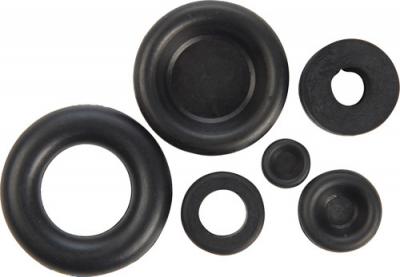
Automotive Window Gasket Rubber Daily Maintenance
September 3, 2018Check whether there is any big crack or fracture in the seal. If the seal is broken, it can be repaired with a binder. Using the special seal adhesive can patch up the big cracks easily. Of course, if...view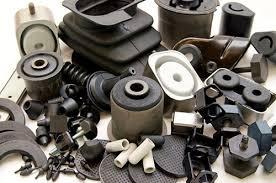
Variety of Rubber Auto Parts
September 3, 2018There are many kinds of the rubber auto parts except the tires. Generally, one car is equipped with 200 to 300 kinds of rubber auto parts, and some wagons and industrial cars can have 400 to 600 piece...view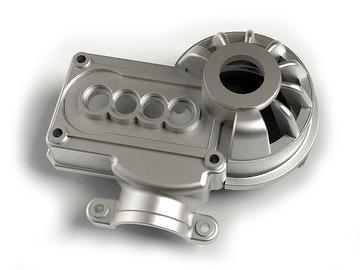
Design Programming of Die Casting Parts
September 3, 2018Design specification for wall thickness of auto die casting partsDie casting parts with thin walls have higher strength and better compactness than the ones with thick walls. In view of this, the desi...view
- TEL:+86-0574-88106851
- FAX:+86-0574-88106851
- EMAIL:sales@relong.cnjett@relong.cn
- ADDRESS:11/F, South Building, No. 1299, East Yinxian Avenue, Ningbo, China

